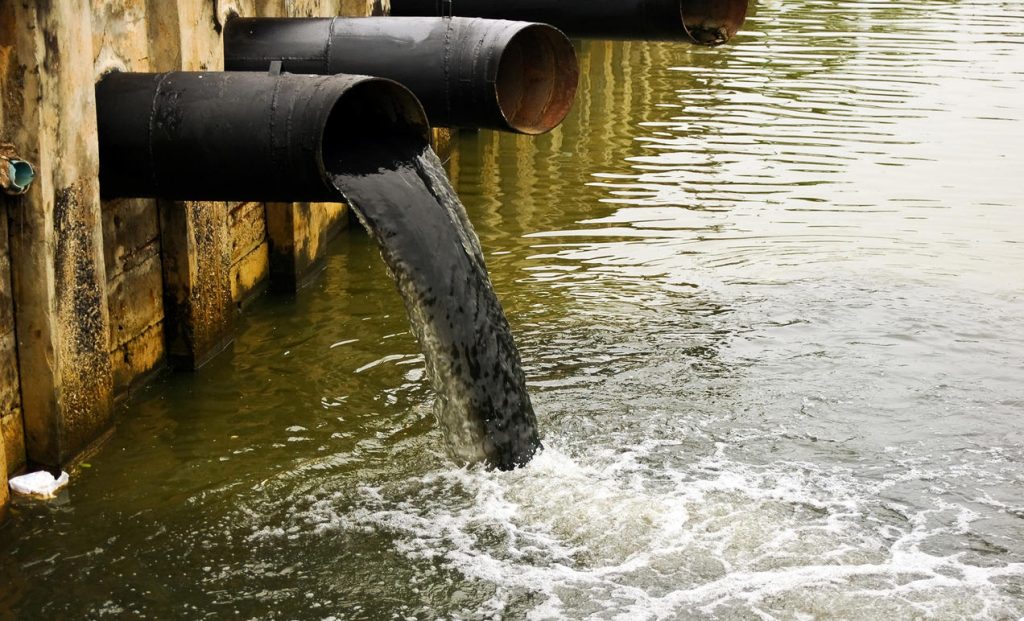One of the largest hazards to both humans and the ecosystem is water pollution. The oceans hold 96.5 percent of the world’s water supply, which makes up 71 percent of the entire planet.
You could believe that because there is so much water on the planet, we will never run out of it. You would be mistaken, though, particularly in light of the pollution rate.
But what other effects does water pollution have on biodiversity than decreasing our water supplies? Find out about the effects of water pollution on biodiversity in this article.
Understanding More About Water Pollution
Water contamination is acknowledged to be a global issue of the twenty-first century. Water contamination causes clean water to become scarcer day by day. T
he presence of life in an aquatic environment is by far its most distinctive benefit, and life’s biodiversity is its most distinctive characteristic.
Water pollution has a wide range of causes and has a negative impact on biodiversity. Any type of human activity has a significant impact on the planet’s biological variety.
Climate change, overfishing, water pollution, habitat degradation, flow modification, and exotic species invasion are six issues that have an impact on aquatic biodiversity.
One of the important factors in retaining ecosystem services is biodiversity maintenance. The preservation of freshwater biodiversity is therefore today’s greatest problem.
In the twenty-first century, water quality problems are among the greatest difficulties humanity faces. Water pollution is a significant problem for both freshwater and marine biodiversity ecosystems; it has detrimental effects on human health as well as on other organisms.
Pollution affects the immune systems of fish either directly or indirectly by altering the quality of the water. There are numerous sources of aquatic contaminants, including industrial effluents, agricultural runoffs, and city sewage, all of which are discharged into the River Nile, progressively rendering the water unfit for human consumption.
Numerous herbicides and pesticides found in agricultural effluent have detrimental effects on rivers and the people who drink their water.
Industrial effluents contain hazardous heavy metals that can react with suspended particulates found in home wastewater to generate muck.
Also, water pollution in Egypt, particularly in Alexandria (El-Max Bay and Bahary), altered the biological reactions of fish and ultimately led to food oxidation damage accompanied by deteriorating environmental quality.
In addition, water pollution impacted the immune genes of samples of seabream, Pagrus auratus, and seabass, Dicentrarchus labrax.
Effects of Pollution of the Water and Biodiversity
The majority of aquatic organisms are extremely sensitive to any environmental change, and they react to pollution in various ways.
The most extreme reactions take the form of migration to another habitat or death. Reduced reproductive ability and the inhibition of specific enzyme systems required for conventional metabolism are two examples of fewer responses.
17 The significance of zooplankton and macrobenthic elements in the trophic dynamics of freshwater environments was acknowledged.
Such creatures not only influence aquatic productivity by occupying intermediate levels in the food chain, but they also provide information about the state of the environment during a specific time period.
Additionally, their diversity has gained significance recently, particularly because some of their species can detect changes in water quality brought on by eutrophication and pollution.
Fish numbers at the apex of food webs decreased whenever the food chain was disrupted as a result of variety loss or degradation.
While Bishai et al. documented that only 71 fish species and 22 species were detected in the capture, while 49 were rare, Boulenger observed 85 fish species residing in Egyptian Nile waters during the years 1899–1902.
Between Aswan and Cairo, the Nile showed signs of slightly diminished taxonomic richness and had areas that were seriously polluted by sewage drains, industries, and agricultural sources.
A highly dynamic aquatic system that has been exposed to various contaminants is thought to be Lake Manzala.
Pollution causes significant environmental changes in Manzala Lake that have a negative impact on the aquatic biota.
The northern and southern halves of the lake are very different from one another. The Bahr El Baqur drain, among others, discharges wastewater effluent with a high organic matter content onto the southern shore of the lake.
Effects of Water Pollution on Biodiversity
Many of the items we use to pollute the environment. Thermal, radioactive, organic, and inorganic contaminants, pathogens, and suspended particles are examples of water pollutants.
The chemical industry is one of the most significant contributors to water contamination, producing both organic and inorganic waste. Let’s talk a little bit about biodiversity.
It refers to all living things, including people, as well as the genetic diversity of the ecosystem’s species.
Biodiversity is significant because it can meet basic human needs such as fuel, shelter, food, and medicine. Water pollution introduces dangerous pollutants into bodies of water, such as rivers, lakes, and seas.
A pollutant is something that interferes with the normal functioning of the ecosystem.
Causes of Water Pollution
People are the main cause of water pollution, which can happen in many different ways:
1. Industrial Waste:
There are still a lot of companies that don’t treat their waste and end up dumping huge amounts of pollution from their factories into rivers and the sea.
Global warming: As the temperature rises, oxygen levels in the water change because there is less of it. Deforestation is the cause of sediment and bacteria in the ground, which then pollutes the groundwater.
2. Pesticides:
When used on farmland, pesticides get into water systems through underground channels.
3. Oil:
Sometimes crude oil or gasoline products that are being shipped end up in the oceans because of leaks. The results are bad for both the water and the life that lives in it.
4.Waste Tips:
Pollutants like heavy metals like lead and mercury are often released into the soil and groundwater near the site.
The UN says that more than 80% of all wastewater in the world goes straight into the sea and rivers without being cleaned.
The WHO says that studies have found concentrations of chemicals from pharmaceuticals and personal hygiene products in sewage and drinking water.
Effects of Water Pollution Include
1. Food Chain Disruption
The determination of Water contamination also has an impact on the food chain. Small animals in the oceans and other areas of water consume nearly anything.
When they absorb harmful compounds in the water, such as lead, cadmium, and other contaminants, animals further up the food chain consume them as well.
Poisonous compounds will continue to spread from different levels of the food chain. Larger creatures at the top of the food chain feed on them, creating a vicious cycle.
2. Dead Zones
Did you know that natural materials, when present in large quantities, can become pollutants? A dead zone, for example, is caused by an accumulation of chemicals such as nitrogen and phosphorus.
It is frequently introduced into farmland through fertilizers, rendering the environment hazardous and unfit for human habitation. It eventually pushes aquatic life away, perhaps to their death.
How Does Water Pollution Affect the Environment?
Water is essential for both biodiversity and human survival. Almost every living thing requires water to survive, yet certain things are contaminating our sources. Water contamination has serious environmental consequences, which include:
1. It Has an Impact on Aquatic Vegetation and Animals.
Fish, animals, turtles, and a variety of flora and fauna life forms rely on the purity of our water bodies for survival.
Because oxygen and other natural variables are so delicate, introducing foreign materials can disrupt the environment. Plastics, oil spills, agricultural fertilizers, and paper are all typical contaminants in our bodies of water.
Oil spills clog the water’s surface, preventing sunlight from penetrating and causing photosynthesis and cell metabolism to fail.
Furthermore, because these pollutants do not dissolve over time, they might persist in water bodies for decades.
Because aquatic species can’t always distinguish the difference between food and contaminants, they eat them and die.
2. Eutrophication
Although air pollution causes eutrophication, it also has an impact on our water bodies. This is a condition in which nutrients are abundant, leading to an overgrowth of algae and plant cover.
This decreases the amount of oxygen and sunshine that enter the ocean. If the aquatic life in the area is not comfortable, they will be forced to relocate.
3. Blooms of Toxic Algae
Algae that is allowed to grow in vast amounts endangers humans and aquatic wildlife. Toxic algae form, which is detrimental to marine life.
They emit hazardous fumes and pollutants and consume all of the oxygen in the water. Again, this displaces nearby fish, animals, and other aquatic organisms. Unfortunately, reports of algae blooms are increasing, causing water delivery systems around the world to shut down.
4. A rise in Water-Borne Infections
Another disadvantage of water contamination is the spread of waterborne infections. It also spreads the virus.
Toxic chemicals such as lead and mercury are among the primary causes of death from water pollution. These minerals are frequently consumed by fish and other sea organisms.
They cause diseases such as cancer and hepatitis. But it isn’t all. Mercury levels in our bodies of water have risen. It also has an impact on our drinking water.
5. Ecological Destruction
Water contamination has a major impact on the ecosystem. The transfer of nutrients downstream, for example, may promote the growth of algae and other aquatic species.
In most cases, this results in a struggle for resources and developing plants. But that isn’t the main issue.
This algae and microbe overgrowth has an impact on the marine environment by lowering the amount of oxygen available.
6. Dangers to Human Health:
Each year, a billion people become ill as a result of contaminated water. Cholera, giardia, and typhoid fever are among the diseases spread by contaminated water.
Even in developed countries, unintentional or illegal sewage treatment plant discharges and farm and urban runoff contribute to dangerous microorganisms in rivers.
#7. Biodiversity Loss:
Biodiversity loss: Eutrophication, or a lack of oxygen, suffocates plants and animals and can result in ‘dead zones,’ where water is essentially devoid of life.
In some situations, the flowering of hazardous algae can result in the production of neurotoxins that kill species ranging from whales to sea turtles.
8. Changes in Aquatic Habitats:
Changes in aquatic habitats: Any harm to any of these organisms can set off a chain reaction that endangers entire aquatic ecosystems.
9. Economic Loss:
According to a World Bank assessment, the worsening of water quality around the world is substantially diminishing the economic potential of highly contaminated places.
How Climate Change Impacts Earth’s Water
Climate change produces a variety of changes in our water supply, which can lead to pollution and other issues.
1. Rainfall Variations
Temperature increases caused by climate change increase the rate of evaporation from both land and oceans, as well as allow the atmosphere to contain 4 percent more water for every 1 degree Fahrenheit increase.
This increased evaporation will cause some regions to dry out while falling as extra precipitation in others. Dry areas are likely to become drier, while wet ones will become wetter.
This will result in greater drought in some areas and more flooding in others.
2. Increased Water Demand
Individuals, agriculture, and industry will all require more water as temperatures rise and evaporation increases. This increased demand will be exacerbated by the rising population.
As certain places face more droughts, we will need to carry water more frequently. Rising water levels in other locations may require adjustments to infrastructure.
Both of these critical actions may result in increased emissions and energy consumption.
3. Rising Sea Levels
Rising sea levels will be caused by melting ice caps, ice sheets, and glaciers, as well as expanding hot waters.
This has the potential to impact coastal populations and ecosystems, as well as taint fresh water supplies.
Rising sea levels may force saltwater into freshwater aquifers, rendering the water unfit for drinking or agriculture unless treated in an energy-intensive manner.
4. Water Contamination Has Increased.
High volumes of rainfall could overload and damage critical infrastructure such as sewer systems and water treatment plants, resulting in dirty water that turns brown or hazy.
Heavy rains may also increase fertilizer, sediment, trash, and other pollutants flow into water systems.
The Relationship Between Climate Change and Water Pollution
Climate change is affecting our water supplies, habitats, and quality. These difficulties, in turn, cause other problems and contribute to the overall destruction of our environment. The situation is undoubtedly dire, but there are some steps we can take.
Reduced emissions can be achieved by using less energy or switching to renewable energy. Turning off lights when not in use, driving less, and insulating your home to make it more energy-efficient are all things that can help you save energy. Other good lifestyle changes include purchasing ecologically responsible products and eating a low-impact diet.
It might also help to express your support for environmental protection. You can express yourself by writing to government authorities, voting, blogging about it online, or simply talking with family and friends.
Climate change’s influence on our water is only one example of the damage it can cause. It is becoming clear that we are at a tipping point in terms of our changing climate and the future of our planet.
Conclusion:
Pollution is an unwelcome occurrence that the globe is currently experiencing. It puts the environment and biodiversity at risk.
The Earth is a water planet. Without it, no creature on our planet can survive.
However, it is a finite resource. Only 2.5% of the world’s water is fresh, with 69% in glaciers and ice, 30% in groundwater, 0.7% as permafrost, and only 0.3% in lakes and rivers, the latter being the primary daily supply for human consumption. Do you think there are other effects of water pollution on biodiversity that we should know about? Please leave a comment below.


